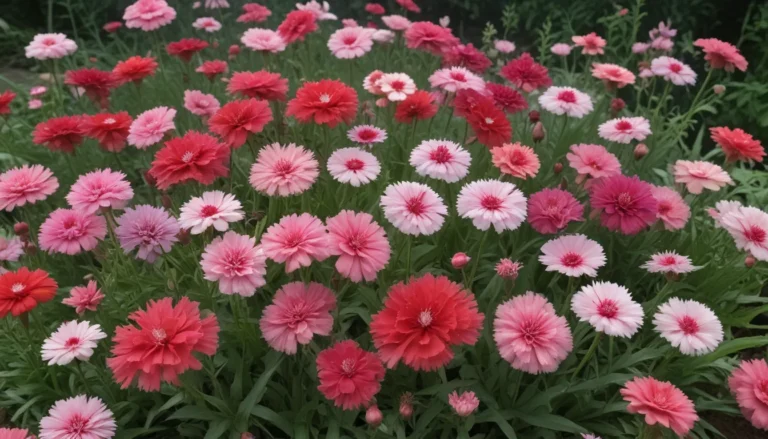The Comprehensive Guide to Identifying and Managing Glassy-Winged Sharpshooters

Homalodisca vitripennis: The Notorious Pest Wreaking Havoc
The glassy-winged sharpshooter, scientifically known as Homalodisca vitripennis, originates from the southeastern United States and northeastern Mexico. Belonging to the Cicadellidae family and the Homalodisca or sharpshooter genus, this insect is classified as a “true bug” in the Hemiptera order.
A sharpshooter is a large type of leafhopper that feeds primarily on plant stems abundant in xylem. Xylem is a sap-filled tissue that transports essential nutrients throughout the plant. While feeding may result in wilting in young plants, larger vegetation may not display any immediate effects. However, the alarming concern arises from its potential role as a vector for deadly plant diseases, injecting bacterial pathogens such as Xylella fastidiosa into susceptible plant species.
Understanding the Threat Posed by Glassy-Winged Sharpshooters
The glassy-winged sharpshooter is a formidable adversary as it attacks over 300 crops and ornamental species. Capable of hopping and flying distances ranging from three to 16 feet, this pest has a wide-ranging impact on various agricultural sectors. Its ability to spread diseases like almond leaf scorch, citrus variegated chlorosis, and Pierce’s disease in grapevines has garnered significant attention from commercial growers and home gardeners alike.
Multiple strains of X. fastidiosa have caused severe damage to crops such as almond, cherry, lavender, oak, olive, and many more. The devastating effects of this pathogen make it crucial to identify and manage glassy-winged sharpshooters effectively.
Recognizing Glassy-Winged Sharpshooters
Identifying these pests is essential for implementing control measures. Glassy-winged sharpshooters are distinguishable by their brown to black bodies, creamy yellow spots on the head and back, and distinctive wing patterns that may vary based on age and gender. Nymphs resemble adults but may exhibit different sizes and colorations, making them recognizable at different life stages.
The Life Cycle of Glassy-Winged Sharpshooters
Understanding the life cycle of glassy-winged sharpshooters is crucial for devising effective management strategies. After mating, females lay between one and 27 eggs on the undersides of leaves, resembling green blisters before hatching. Nymphs feed on plant stems and grow wings as they mature. Adults and nymphs consume substantial amounts of xylem juices daily, excreting large quantities of liquid that leave a whitewash-like residue.
Organic Control Methods for Managing Glassy-Winged Sharpshooters
Implementing organic control methods can help mitigate the impact of glassy-winged sharpshooters on crops and ornamental plants. Consider the following strategies to prevent and manage these pests effectively:
Cultural Controls
- Avoid planting susceptible crops and ornamental species known to attract glassy-winged sharpshooters.
- Clear growing areas of host plants that serve as overwintering sites for pests.
- Inspect new plants for eggs and nymphs before purchase to prevent introducing infested specimens.
- Select X. fastidiosa-resistant varieties when choosing new plants for your garden.
Physical Controls
- Cultivate crops beneath floating row covers to prevent infestation.
- Remove and destroy leaves with egg masses containing greenish eggs.
- Introduce insectary plants that attract beneficial predators like parasitic wasps to control pest populations.
- Cover vulnerable plants with netting to prevent glassy-winged sharpshooter infestations.
Biological Controls
- Introduce natural predators like parasitic wasps, assassin bugs, lacewings, praying mantises, and spiders to control glassy-winged sharpshooter populations.
- Explore innovative treatments like entomopathogenic fungi and chimeric protein solutions to manage these pests.
- Stay informed on research advancements in disrupting mating sounds to reduce insect populations effectively.
Utilizing Organic Pesticides for Glassy-Winged Sharpshooter Management
Organic pesticides can provide effective control of glassy-winged sharpshooters without harming beneficial insects or the environment. Consider the following organic pesticide options for managing these pests:
- Apply pyrethrin-containing products like Pyganic to paralyze adult and nymphal pests.
- Treat plants with horticultural or neem oil to disrupt the breathing and feeding of glassy-winged sharpshooters.
- Consider using acetamiprid-containing products to target sapsuckers and prevent the spread of diseases.
Chemical Pesticide Control for Glassy-Winged Sharpshooters
While chemical controls are available for managing glassy-winged sharpshooters, they may pose risks to pets, humans, and beneficial insects. Chemical control methods should be used judiciously and as a last resort to avoid potential harm to the environment and biodiversity.
- Systemic neonicotinoid chemicals like imidacloprid and thiamethoxam can be used to control glassy-winged sharpshooter populations.
- Exercise caution when using chemical pesticides and consider their potential impact on non-target organisms and ecosystems.
Conclusion: Safeguarding Your Plants Against Glassy-Winged Sharpshooters
The threat posed by glassy-winged sharpshooters to crops and ornamental plants underscores the importance of proactive pest management strategies. By implementing a combination of cultural, physical, biological, and organic control methods, you can protect your garden from the devastating effects of these pests.
Maintaining vigilance and staying informed about the latest pest management developments will empower you to safeguard your plants effectively. Reporting sightings and eradication efforts to local extension offices can contribute to monitoring populations and developing integrated pest management systems to combat glassy-winged sharpshooters.
If you have encountered glassy-winged sharpshooters in your garden, share your experiences in the comments below. Your insights and efforts to combat these pests can help fellow gardeners in their pest management endeavors.
For more information on garden pest control, consider exploring additional guides on beneficial nematodes, pheromone-based insect control, and integrated pest management strategies.
Remember, a proactive and holistic approach to pest management is key to preserving the health and vitality of your plants and the environment.
I hope you find this extended, revamped guide on identifying and managing glassy-winged sharpshooters informative and practical for your gardening endeavors! Let me know if there’s anything else you’d like to learn more about in the realm of pest management.





